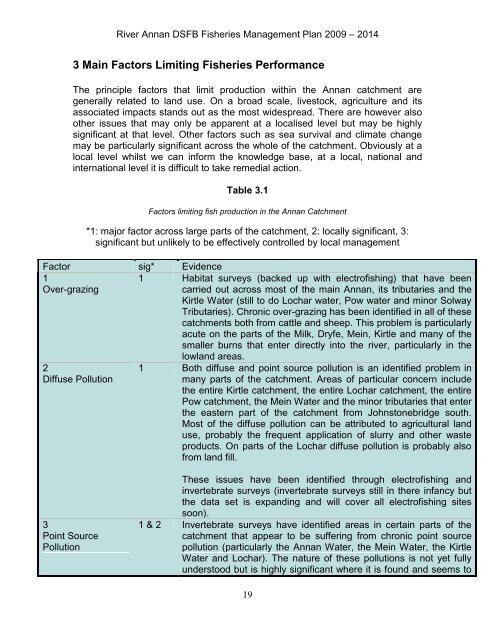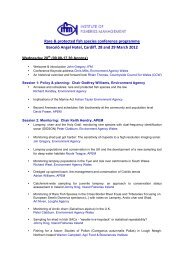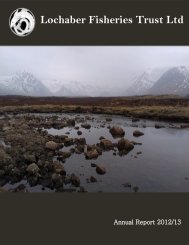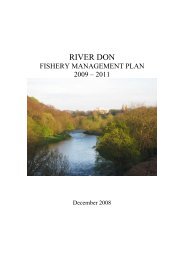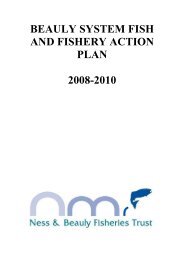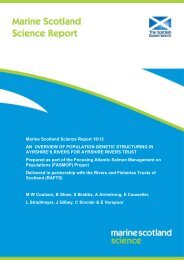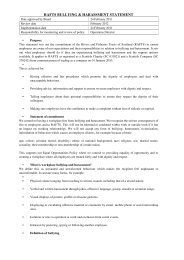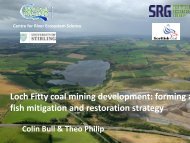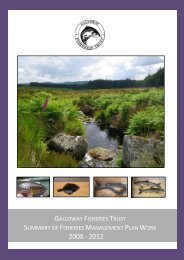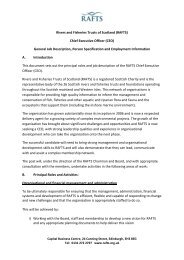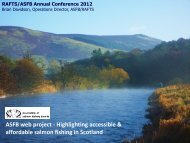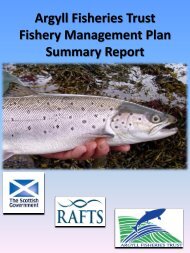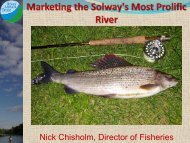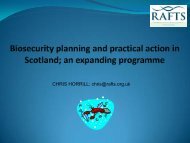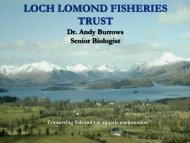Create successful ePaper yourself
Turn your PDF publications into a flip-book with our unique Google optimized e-Paper software.
River <strong>Annan</strong> DSFB Fisheries <strong>Management</strong> <strong>Plan</strong> 2009 – 20143 Main Factors Limiting Fisheries PerformanceThe principle factors that limit production within the <strong>Annan</strong> catchment aregenerally related to land use. On a broad scale, livestock, agriculture and itsassociated impacts stands out as the most widespread. There are however alsoother issues that may only be apparent at a localised level but may be highlysignificant at that level. Other factors such as sea survival and climate changemay be particularly significant across the whole of the catchment. Obviously at alocal level whilst we can inform the knowledge base, at a local, national andinternational level it is difficult to take remedial action.Table 3.1Factors limiting fish production in the <strong>Annan</strong> Catchment*1: major factor across large parts of the catchment, 2: locally significant, 3:significant but unlikely to be effectively controlled by local managementFactor sig* Evidence1Over-grazing1 Habitat surveys (backed up with electrofishing) that have beencarried out across most of the main <strong>Annan</strong>, its tributaries and theKirtle Water (still to do Lochar water, Pow water and minor SolwayTributaries). Chronic over-grazing has been identified in all of thesecatchments both from cattle and sheep. This problem is particularlyacute on the parts of the Milk, Dryfe, Mein, Kirtle and many of thesmaller burns that enter directly into the river, particularly in the2Diffuse Pollutionlowland areas.1 Both diffuse and point source pollution is an identified problem inmany parts of the catchment. Areas of particular concern includethe entire Kirtle catchment, the entire Lochar catchment, the entirePow catchment, the Mein Water and the minor tributaries that enterthe eastern part of the catchment from Johnstonebridge south.Most of the diffuse pollution can be attributed to agricultural landuse, probably the frequent application of slurry and other wasteproducts. On parts of the Lochar diffuse pollution is probably alsofrom land fill.3Point SourcePollutionThese issues have been identified through electrofishing andinvertebrate surveys (invertebrate surveys still in there infancy butthe data set is expanding and will cover all electrofishing sitessoon).1 & 2 Invertebrate surveys have identified areas in certain parts of thecatchment that appear to be suffering from chronic point sourcepollution (particularly the <strong>Annan</strong> Water, the Mein Water, the KirtleWater and Lochar). The nature of these pollutions is not yet fullyunderstood but is highly significant where it is found and seems to19


